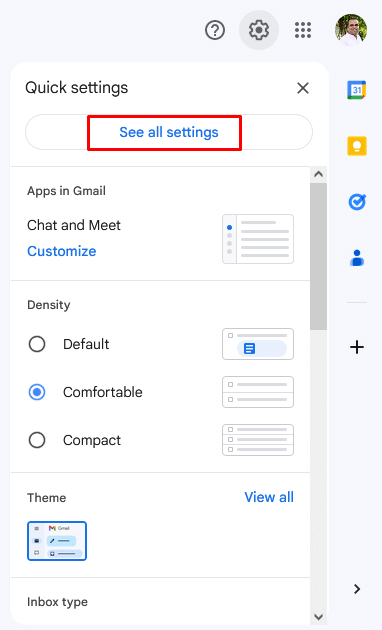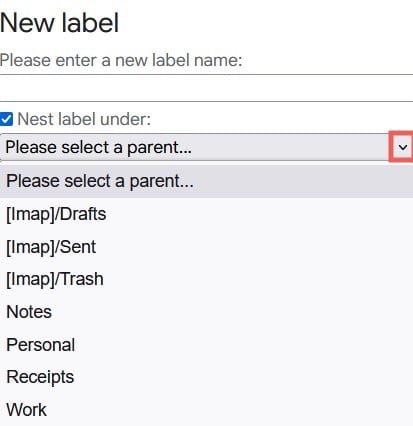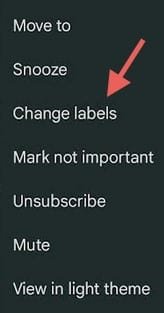Is your inbox drowning in a sea of emails? The constant influx of messages can quickly lead to email overload. Fortunately, there’s a straightforward method to prevent your emails from vanishing into the depths of your primary inbox.
Gmail allows you to create folders, referred to as “labels,” allowing you to channel your emails to the appropriate destinations within your account. Be it a critical work notification, an impending bill, or a promotional message from your beloved skincare brand, you can bid farewell to the fear of losing these vital messages.
It’s high time to declutter your chaotic inbox if you’re not looking to Mass Delete your emails. Let’s explore how to create folders in Gmail.
What are the Importances of Establishing Folders for Your Emails?
Maintaining an organized digital space is not only satisfying but also incredibly convenient. Even if you’re not inundated with a flood of daily emails, the risk of losing an essential message amidst the clutter is a familiar frustration.
The good news is you can bring order to your Inbox, making it appear streamlined and user-friendly. While sorting items into folders may seem obvious, labeling is the perfect companion for emails.
For instance, imagine consolidating all your travel-related correspondence into one folder and giving it a distinctive blue label – let’s call it ‘Traveling.’ Now, all your travel-related emails sport a conspicuous blue hue, simplifying navigation through your Inbox.
What’s more, this labeling system ensures you can swiftly locate those labeled emails, even if they were dispatched a month ago. No one wants to embark on a frantic scroll quest for a plane ticket right before the airport check-in. It’s all about efficiency and peace of mind.
Creating Folders in Gmail: Fundamental Guidelines
If you’re looking to create folders in Gmail, it’s essential to grasp the following key points:
- Gmail refers to folders as labels.
- Your inbox sidebar is where you can locate all your labels.
- Once you’ve established a label, you can decide which emails to relocate.
- Gmail can handle up to 10,000 labels.
- On your computer, you can arrange your labels hierarchically, allowing them to nest under another label, akin to a parent folder. Please note that the mobile app does not support the creation of parent labels.
How to Create Folders in Gmail
Option #01: Via the Sidebar
- Begin by opening Gmail on your desktop or computer and logging in to your account.
- On the left side of your screen, you will see a list of existing labels. This menu starts with Inbox and includes folders like Starred, Sent, and Drafts.
- Scroll down to the end of the list, where you will find the “More” option. Click on “More” to expand the complete menu.

4. Once the complete menu is visible, click “+ Create new label.”

5. A pop-up screen will appear. In this window, provide a name for your new folder. Gmail allows label names of up to 225 characters. After naming your label, click “Create.”

Option #02: Via Settings
1. Access your Gmail account and locate the settings icon, which is shaped like a gear. Click on it.

2. A pop-up box will appear. Inside this box, find and click on the option that says “See all settings.”

3. Once you’re in the settings menu, navigate to the “Labels” tab. Scroll down until you see the “Create new label” option.

4. Click on “Create new label,” and in the subsequent window, give your label a name. Finally, click “Create” to complete the process.
How to Create Subfolders in Gmail
Enhancing Email Organization with Subfolders in Gmail: A Step-by-Step Guide
You can take your email organization to the next level by creating subfolders, essentially labels nested within parent labels.
Please note that the capability to create subfolders is exclusive to the desktop version of Gmail, as the mobile app does not support subcategory creation.
There are two methods to create subfolders from your desktop:
Option #01: Create a new label and designate it as a subfolder
1. Begin by following the instructions to create a new label, stopping before you click the final “Create” button.

2. Below your newly created label’s name, you’ll find a checkbox labeled “Nest label under.” Tick this box.

3. A dropdown menu reading “Please select a parent…” will appear. Click the down arrow to reveal all available folders. Choose the label you want to serve as the parent for your subcategory, and then click “Create.”
Option #02: Create a subfolder from within a folder
1. On the left side of your screen, locate the list of folders and scroll to the parent label under which you want to create a subfolder.
2. Hover over the folder, and you’ll see three dots. Click on these dots.

3. At the bottom of the pop-up box that appears, click “Add sublabel.”

With these steps, you can efficiently organize your emails in Gmail by creating subfolders within parent labels on the desktop version of the platform.
How to Create Labels (Folders) in the Gmail Mobile App 2023
As of the current year (2023), the mobile version of Gmail does not offer an option to create new labels (folders). However, you can still assign existing labels to your messages.
Here’s how:
1. Open the message to which you want to assign a label.
2. In the upper-right corner of the screen, tap the three vertical dots.
3. From the menu, select the “Change labels” option.

4. The Gmail app will present your available labels.
5. Choose one or more labels that you wish to associate with your message.

6. Press “OK” to apply the selected label(s) to the message.
Boosting Inbox Efficiency: 5 Folder Concepts to Consider
Your email management style speaks volumes about your approach to communication. Whether you advocate for a pristine “zero inbox” or don’t mind a bit of email accumulation, staying organized is essential.
Once you’ve mastered creating folders (labels) in Gmail, you can elevate your email game by configuring labels for future messages, ensuring a hassle-free experience.
Here are five folder ideas that can transform your inbox into a straightforward to-do list:
- Inbox: This folder should be empty unless you’ve just received an email and are awaiting an immediate response. It’s your active workspace.
- Today: Use this for time-sensitive messages that require a swift reply.
- This week: For emails that need your attention by the week’s end, keeping them in this folder ensures they stay top of mind.
- This month: Use this folder for emails requiring a longer-term response or action within the month.
- FYI: Reserve this folder for emails packed with information you may need for reference at a later date. They serve a purely informational purpose.
Pro tip: Schedule a reminder email for Friday to revisit and respond to messages in your “This Week” folder.
However, how you organize your emails should be tailored to what works best for you. Your inbox is your territory. Start by brainstorming a few categories that align with your message types, and feel free to adjust or delete labels if they no longer serve your needs. After all, your email management should be as unique as you are.
FAQ
Certainly, Gmail does impose a maximum limit on the number of labels you can create. You can create up to 10,000 labels within your Gmail account.
Yes, Gmail provides automatic synchronization of labels across all your connected devices. Nevertheless, it’s worth noting that the visual representation may vary slightly depending on factors such as your operating system, device, web browser, and other variables.
Conclusion
For many email users, a cluttered Inbox is a common source of frustration. That is why learning how to create folders in Gmail is beneficial. Gmail offers a solution through labels, providing efficient organization for your emails.
Labels offer a range of functionalities beyond the standard actions of editing and deleting, including the ability to assign colors, move messages between labels, and more.
While labels and folders are the same, there are subtle distinctions between the two. If you lean towards a more traditional folder-based approach, you can enhance your Gmail experience by exploring inbox management apps like Canary Mail and Spark Mail. These applications provide a more folder-centric approach to email organization.